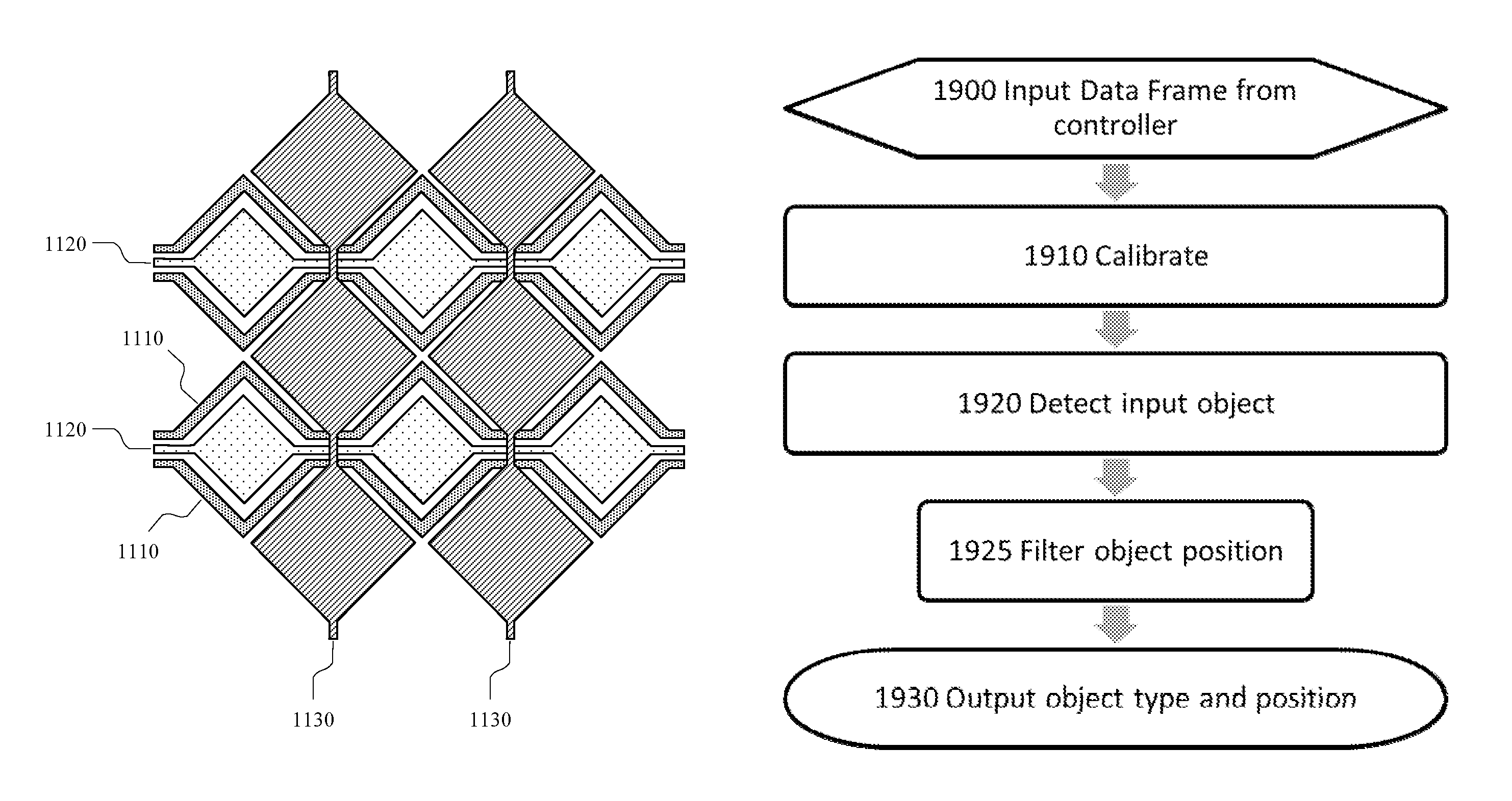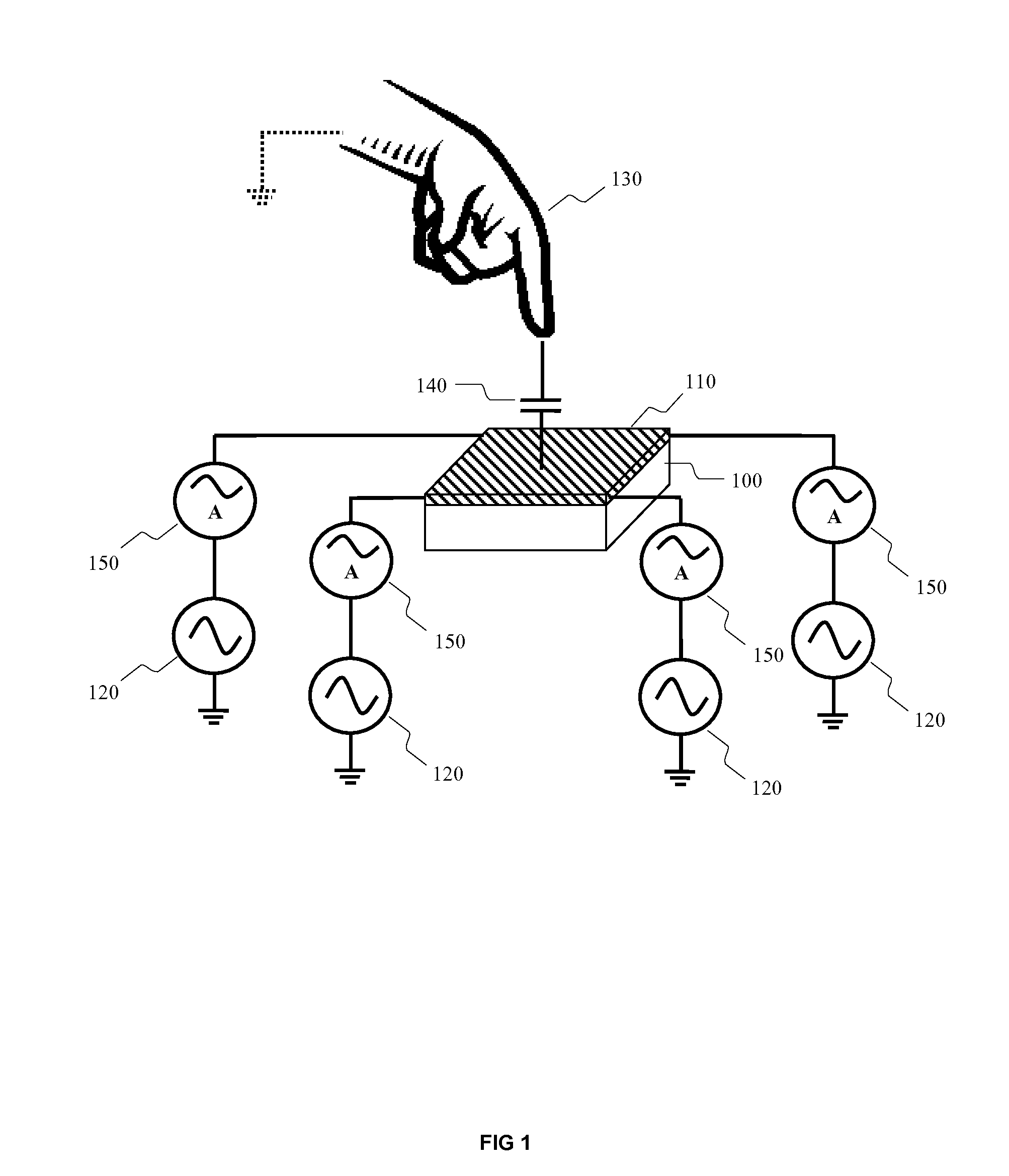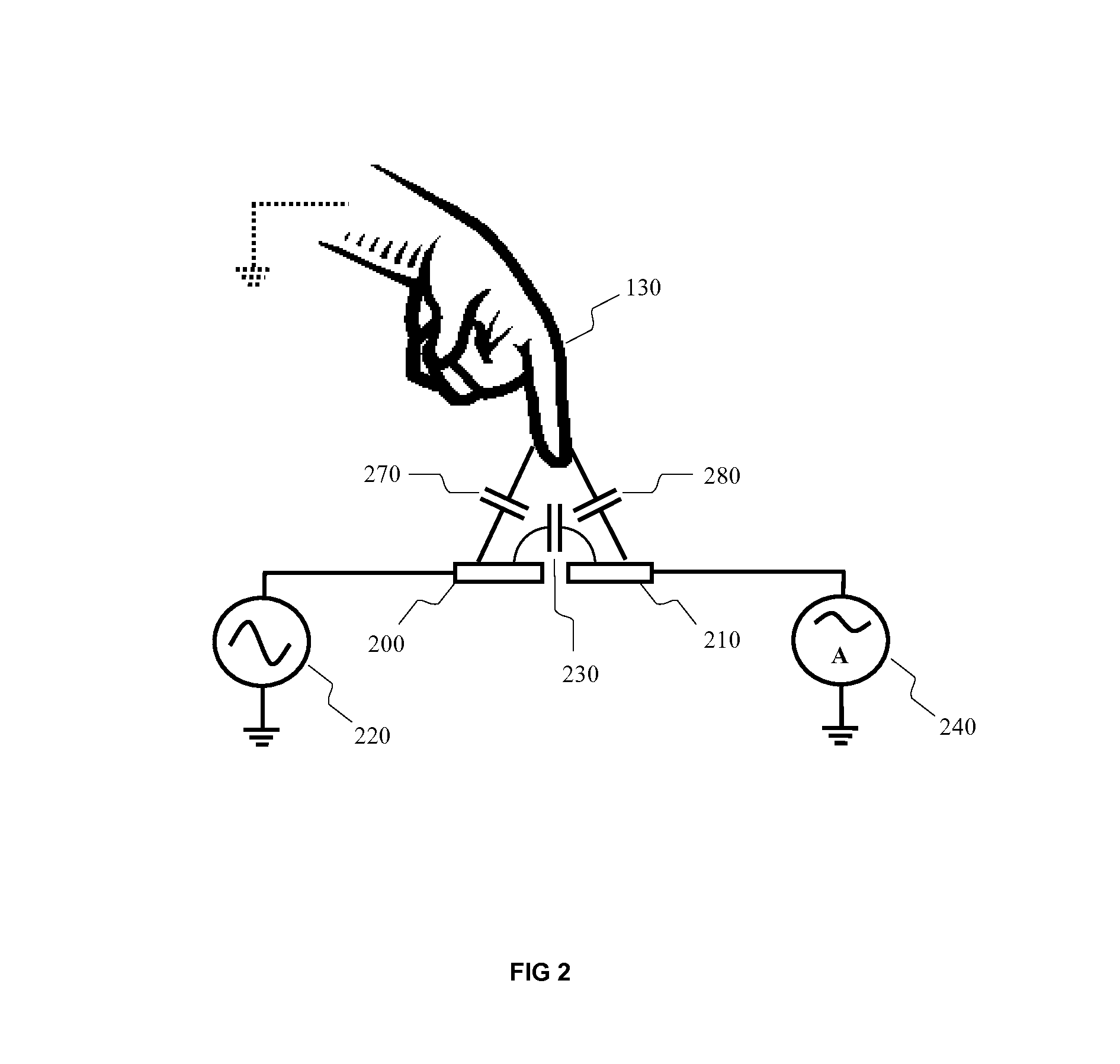Discriminative capacitive touch panel
a capacitive touch panel and discrimination technology, applied in the field of capacitive touch panel devices, can solve the problems of reducing the usability of the touch panel, unable to detect multiple simultaneous touch input events, and inability to detect input from non-conductive or insulating objects
- Summary
- Abstract
- Description
- Claims
- Application Information
AI Technical Summary
Benefits of technology
Problems solved by technology
Method used
Image
Examples
second embodiment
[0225]In accordance with the invention, shown in FIG. 11, the electrode array includes a plurality of drive electrodes and sense electrodes in which the drive electrodes are arranged in pairs such that two drive electrodes are provided at every intersection in the array. Each drive electrode pair includes a first drive electrode, DA 1110, and a second drive electrode, DB 1120. The second drive electrode DB 1120 may have a diamond geometry, while the first drive electrode DA 1110 may be split into two parts that run either side of the second drive electrode DB 1120. The electrode arrangement may be symmetrical around the centre line of the second drive electrode DB 1120. In this way, the second drive electrode DB 1120 is more distant from each sense electrode than the first drive electrode DA 1110. Accordingly, the mutual coupling capacitor between the first drive electrode DA 1110 and the sense electrode is similar to the capacitance CA above and the mutual coupling capacitor betwee...
fourth embodiment
[0229]FIG. 16 shows an electrode arrangement in accordance with the invention. The electrode array of the present embodiment includes a plurality of sense electrode pairs 1600, each pair comprising a first dual-function sense electrode 1610 and a second dual-function sense electrode 1620, and a plurality of drive electrodes 1630, 1650. A first connecting wire 1612 is connected to the first dual-function sense electrode 1610 and a second connecting wire 1622 is connected to the second dual-function sense electrode 1620. The drive electrodes 1630, 1650 and the shapes of the first and second dual function sense electrodes 1610, 1620 may be formed in the transparent conductive layer 420 and the first and second connecting wires 1612, 1622 may be formed in the conductive bridge layer 450. Electrical isolation of the electrodes from the connecting wires is achieved by the insulator layer 460 between the transparent conductive layer 420 and the conductive bridge layer 450. Contact holes 16...
fifth embodiment
[0232]In accordance with the present invention, an electrode array includes sense electrode pairs and drive electrode pairs that are arranged as follows. The sense electrode pairs are divided into odd numbered sense electrode pairs 1700 and even numbered sense electrode pairs 1702. The drive electrode pairs are divided into odd numbered drive electrode pairs 1704 and even numbered drive electrode pairs 1706. The sense electrode pairs are formed by a first and second dual-function sense electrode and the drive electrode pairs are formed by a first and second dual-function drive electrode. As shown in FIG. 17A, the first odd numbered dual-function sense electrode, sense electrode A11710, is adjacent to the first odd numbered drive electrode, drive electrode A11730. The second odd numbered dual-function sense electrode, sense electrode B11720, is adjacent to the first even numbered drive electrode, drive electrode A21735. The first even numbered dual-function sense electrode, sense ele...
PUM
 Login to View More
Login to View More Abstract
Description
Claims
Application Information
 Login to View More
Login to View More - R&D
- Intellectual Property
- Life Sciences
- Materials
- Tech Scout
- Unparalleled Data Quality
- Higher Quality Content
- 60% Fewer Hallucinations
Browse by: Latest US Patents, China's latest patents, Technical Efficacy Thesaurus, Application Domain, Technology Topic, Popular Technical Reports.
© 2025 PatSnap. All rights reserved.Legal|Privacy policy|Modern Slavery Act Transparency Statement|Sitemap|About US| Contact US: help@patsnap.com



